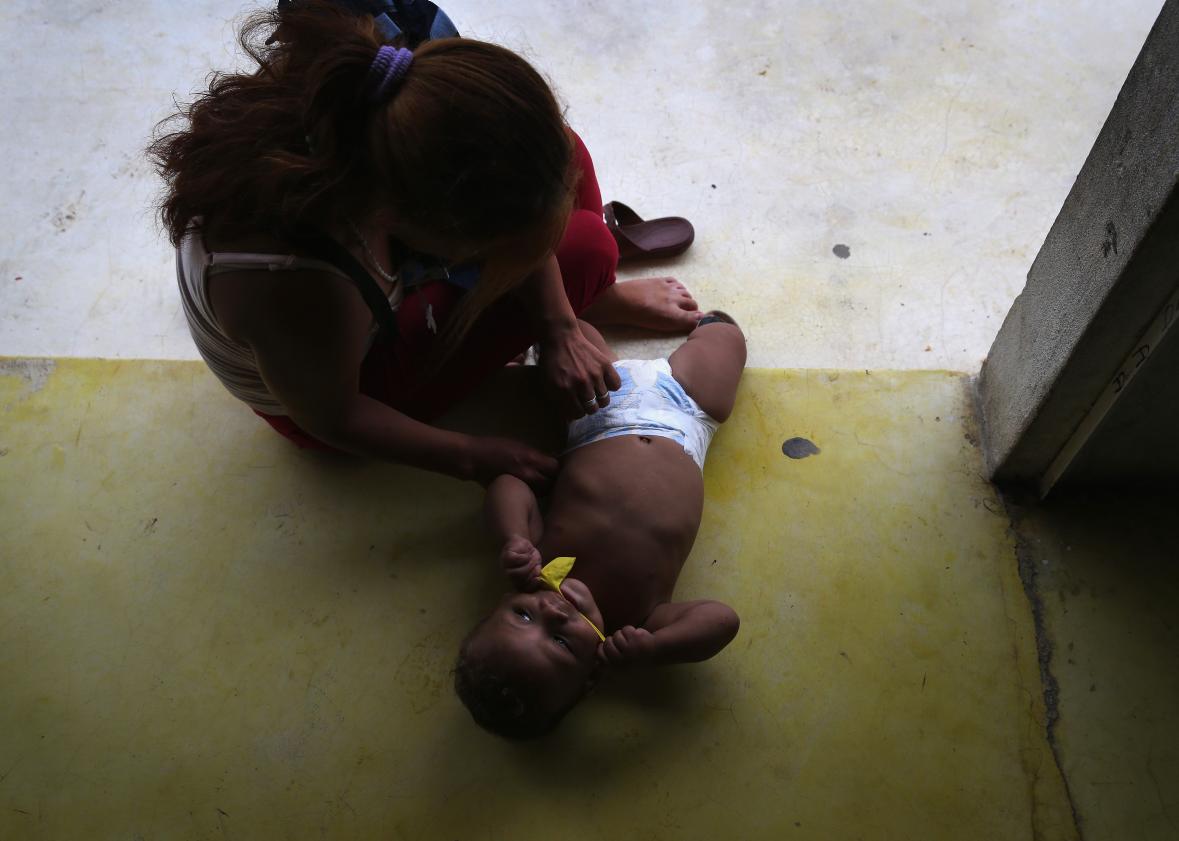Speaking at SXSW last week, President Obama announced a new program aimed at improving the distribution of free or low-cost diapers to low-income families. The White House has turned to Silicon Valley, enlisting e-commerce start-up Jet and diaper manufacturer First Quality to work together to provide lower-cost diapers to individual non-profits, which will then distribute them to families in need. Obama said, “We sort of convened the thing, but it’s not running through a government program.”
Hearing a president talk about diaper need, a crucial but often ignored problem for poor families, is unprecedented and fantastic. Diapers are expensive, averaging around $80 a month, and the poorest 20 percent of families spend an average of 14 percent of their income on them. One out of every three American children is being raised by parents who struggle to afford diapers, and children whose parents don’t provide diapers cannot participate in early childhood education programs. It’s not an exaggeration to say that for many parents, affordable diapers are the key to accessing care and education for their children.
But while the White House’s plan is progress—for both the way it provides diapers to those in need and raises awareness of a long-neglected issue—it also makes clear just how patchwork and limited the current government response to diaper need is. A private-sector partnership, like the one Obama announced, will help, but ultimately it’s no replacement for a universal, publicly funded program that would make sure that every child has access to clean diapers. Fortunately, advocates are currently working on a few different legislative models that, if implemented, would offer a much more comprehensive approach.
Last November, Rep. Rosa DeLauro (Conn.) and Rep. Keith Ellison (Minn.) introduced the Hygiene Assistance for Families of Infants and Toddlers Act of 2015. If passed, the legislation would make federal grant funds available to states to create their own diaper-distribution methods through the Temporary Assistance for Needy Families (TANF) program. (A similar pilot program is currently underway in San Francisco.) States could give families vouchers to buy diapers, or they could distribute the diapers directly to families.
Rep. DeLauro says she was inspired by the nonprofit National Diaper Bank Network to begin working on these issues more than five years ago and has already tried a number of approaches. She attempted to get diapers covered by the Women, Infants, and Children (WIC) program, but the Department of Agriculture, which oversees funding for WIC and food stamps, said funding for diapers would compete with funding for food items. In 2011 she introduced the Diaper Investment and Aid to Promote Economic Recovery Act (DIAPER) Act, which would have allocated funds to provide diapers for the needy through day-care centers. But apart from some predictable outrage from Rush Limbaugh, who called diaper need “hilarious,” this bill didn’t get much traction.
DeLauro says she doesn’t have high hopes for the latest bill, considering that the current Congress is “unwilling to address some of the biggest issues affecting working families today.” Still, she plans on continuing to seek a more comprehensive solution to diaper need because “just asking for voluntary contributions is never going to be enough.”
Another approach to increasing diaper access would be to classify them as a medical necessity and distribute them through Medicaid. Advocates say that this type of program could have the largest reach, and get the most diapers to the most families.
Megan Smith, an assistant professor of psychiatry at Yale whose previous work inspired the White House’s new program, says she’s currently working on a research project with the New Haven Moms Partnership, the National Diaper Bank Network, and the state of Connecticut that will aim to establish diapers as a medical need. As part of a larger study, they are planning to recruit 2,500 families and provide basic needs—things like thermometers and children’s Tylenol—to all of them, but diapers only to some of them. Then they are going to use Medicaid claims data to look at any potential differences in health problems between those who did and didn’t receive diapers. Previous research shows families without diapers often re-use them or keep their children in them for too long. This can lead to higher rates of urinary tract infections and skin rashes for the children—conditions for which parents are likely to seek medical help.
“We’re focused on exploring the cost effectiveness of diapers, and how access to them might lead to lower medical costs in the long run,” Smith said. “This would really help us make the case on why Medicaid should cover them. That, and the fact that having diapers allows parents to send their kids to daycare, which then allows the parents to go to work.”
